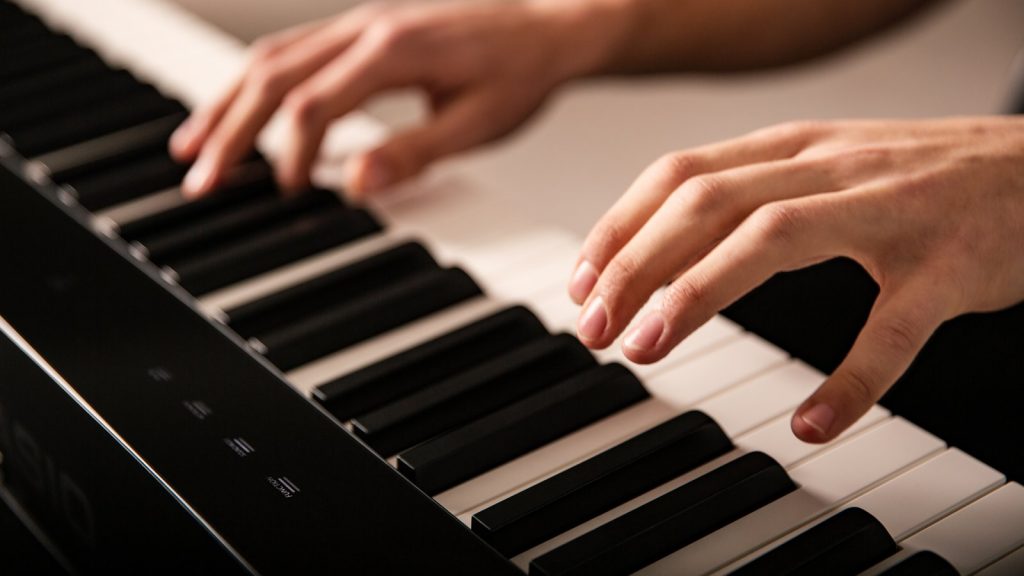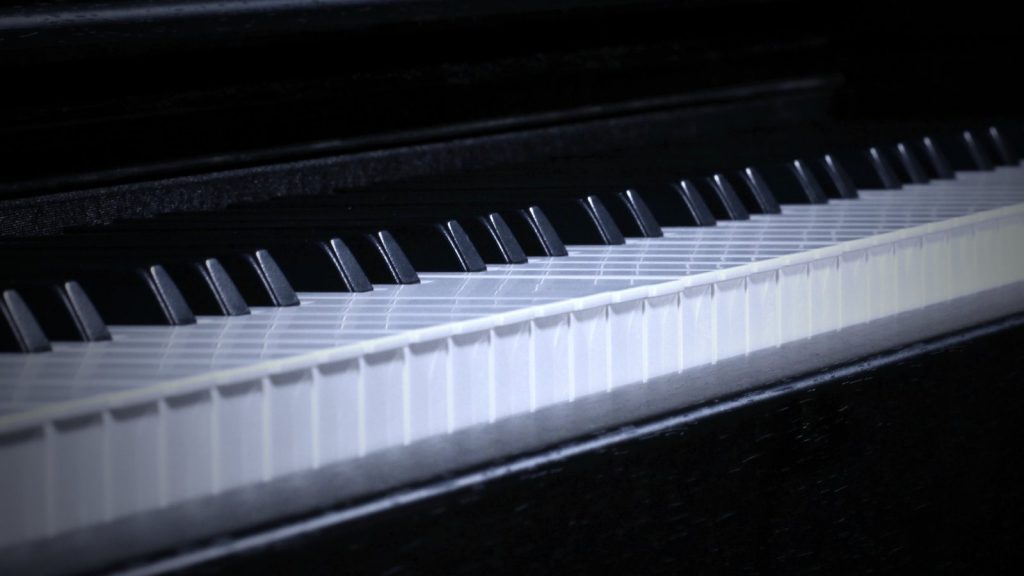Buying a Digital Piano for Beginners: Which keyboard?
This is difficult to judge without prior knowledge. After all, you’ll often find the most important features in advertisements for cheap products. Usually, the hammer action is the first point mentioned. And indeed, almost every digital piano today has one, but the differences in quality can be enormous. You should take a close look at the hammer action, especially on inexpensive pianos.
Touch sensitivity and 88 keys are standard on (almost) all beginner pianos. However, a keyboard that is suitable for learning how to play the piano should have these features:
- Weighted piano keys: For the most authentic piano touch, you need weighted piano keys with a hammer action.
- Hammer action: This is a complex action with balanced weights and moving hammers. Its purpose is simply to simulate the touch of a piano action.
- Graded Weighting: The keyboard of acoustic pianos is weighted differently depending on the key range to provide a balanced playing feel. Manufacturers refer to this as a graded hammer action.
The first three points are a must if you want to learn to play the piano on a digital piano. The touch dynamics of beginner pianos can also be individually adjusted to the strength of the touch using a dynamic function (Touch Curve). This is especially important for beginners whose fingers may not yet be able to muster up the necessary strength.
Ivory Feel
In rare cases, beginner pianos offer a textured key surface. An Ivory Feel keyboard is not a must, but it is a nice feature that has a positive effect on the playing feel.
Let-off mechanism
Keyboards with a let-off mechanism are very rare on inexpensive entry-level instruments. This is a mechanical function that makes the touch response (especially in pianissimo) more precise.
How to recognize a good digital piano keyboard as a beginner
A good hammer action keyboard should give you a well-balanced playing feel. The keys should provide a piano touch that is as evenly as possible across the entire range. Basically, a keyboard should play tight and precise, but pay attention to these subtleties:
- Weighted hammers: Slowly move one or more keys up and down at the same time. Does it feel like a balanced seesaw, or does it feel like a spring is pulling the key up? The latter is not good. The keys should just follow your fingers.
- Mechanical noise: This is normal with a hammer action, but you shouldn’t be hearing any loud knocks. This is true both when you press it down and when the key snaps back into the rest position. The purely mechanical noises must be more or less the same for all keys. Under no circumstances should the keys rattle.
- Key movement: Move the keys sideways when at rest. There may be a little room – but do the keys have so much lateral play that they could bump into each other? Or can you even twist horizontally? A keyboard like that is pure junk!
- Key bounce: Watch the movement of the key when you suddenly release it from the depressed position! Once in the rest position, it may bounce briefly. The keys should not rattle.
- Key action: How does it feel to depress the keys? Does the key land in a controlled manner with a slight counter-pressure? Or do you feel that the key hits hard? If the latter is the case: Stay away from this piano!
- Accurate key position: Look at the front edge along the entire keyboard. Do all the keys make up an even surface? Are they all straight and parallel?
Which entry-level digital pianos have good keyboards?
You are on the safe side with the current brand products. Japanese manufacturers dominate this area: Casio, Kawai, Roland, and Yamaha. Kawai and Yamaha are the market leaders with decades of experience in traditional piano manufacturing. Even in the lower price ranges, you can expect these instruments to have keyboards of appropriate, good quality. This also applies to Casio and Roland, which use own-brand keyboards.
The German manufacturer GEWA is a newcomer in the digital piano sector but also offers high-quality keyboards. GEWA pianos feature keyboards from the Italian manufacturer Fatar.
Regarding low-budget pianos, we took a look at the Thomann music store and tested their own-brand DP-32 and DP-51 pianos. The keyboards of these instruments aren’t quite as good as those of the aforementioned brands, but they are of reasonable entry-level quality given their very affordable price. The Hemingway DP-701 MKII – also a Thomann brand – did not perform quite as well.
Yamaha’s entry-level portable pianos are also worth testing. Although there are no fancy features such as a let-off mechanism or Ivory Feel, the “Graded Hammer Compact” keyboard of the Yamaha P-145 and Yamaha P-225 is a solid option that has proven itself in many Yamaha instruments.
→ Take a look at our electric piano review, which recommends the best digital pianos for beginners of the year.
Semi-weighted keys vs. weighted hammer action
“Pianos for beginners” or “electric pianos for children” are often instruments with a semi-weighted keyboard. These instruments are recommended for absolute beginners who are more comfortable with a very easy-to-play keyboard when taking their first steps on the piano. If you want the most authentic piano touch possible, you need a digital piano with a graded weighted hammer action.




